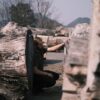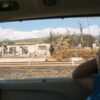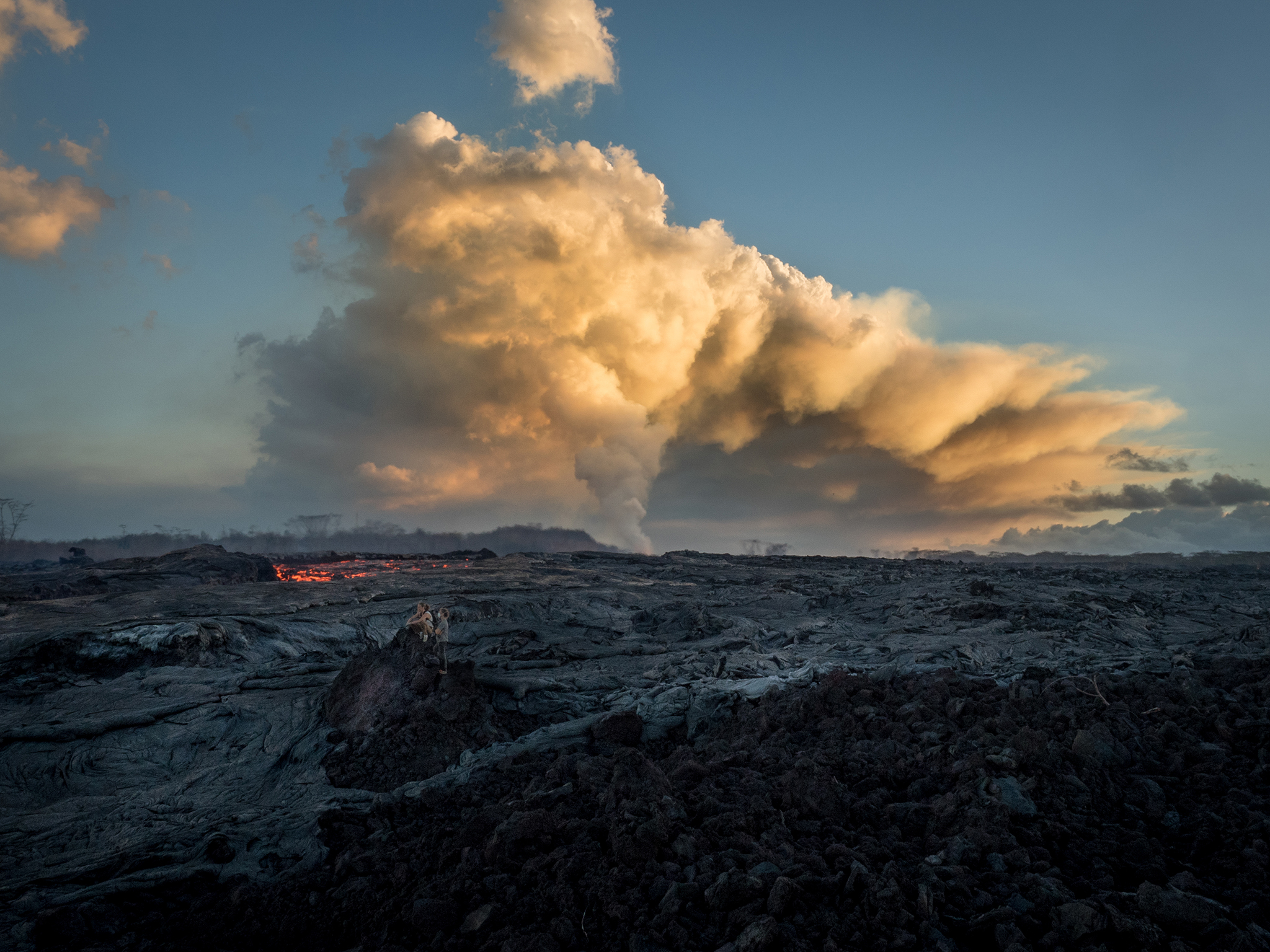Text by Anna Harmon
Images by Zen Moriya
Looking at a map tracing the eruption in Puna in 2018, I see my body. The land has a wound cutting thinly across it, a dotted line of 24 fissures from which lava rose from underground and flowed along the island’s slopes. In 2021, I delivered my daughter via cesarean section; drawn across my own body is a long, delicate scar where my torso was opened and my child was removed from my womb. Just like that day when a new life came into my world, new land was created over the months those fissures opened and lava met the ocean on the eastern side of Hawai‘i Island, where the Hawaiian goddess Pele resides at Kīlauea, a shield volcano with a summit caldera and two active rift zones.
But the lava didn’t erupt from the center of the volcano like the most archetypal of births. Instead, a backup in the system of Pu‘u Ō‘ō crater, which emerged from a fissure 35 years ago in the east rift zone and had been erupting continuously for 35 years, caused the summit caldera to partially collapse. The earth shook as the lava drained out and then erupted forth from a new fissure in Leilani Estates. Another fissure opened, and then another, following the underground rift. By the time the eruption subsided, lava fields had covered 13.7 square miles. Black sand beaches are still forming as bits of lava wash ashore, and ferns are beginning to grow in the cracks of lava flow that buried land, roads, and homes. Steam still grows dense over whorls of hardened lava when it rains, because it is still cooling.
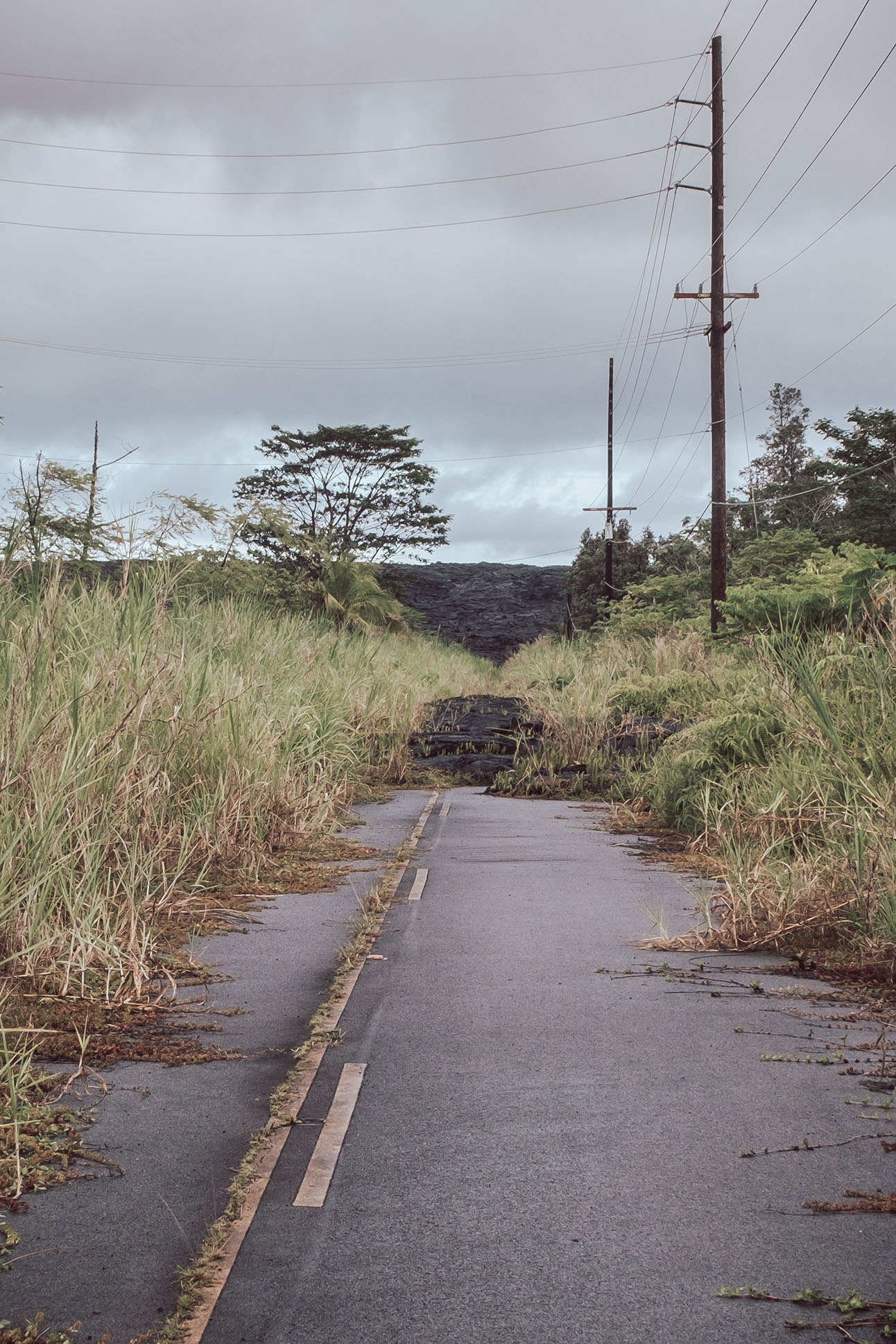
I first visited Puna in 2013 at a time when Kīlauea was actively flowing. On a walking tour that started in Kalapana, our guides led us across plains of lava field that in 1990 to 1991 consumed nearly all of the town, where their families were from. Eventually we reached molten lava that rolled down the slope, and from afar we saw lava entering the ocean at the bottom of a steep cliff, steam rising up where it met the sea.
When you become a new parent, your vision narrows to the size of a newborn. Look how tiny their hands are, watch the way they look at your face. As they grow, your vision expands to their range of movement. Now that they can crawl across the sand, you see a whole swath of beach.
In some ways, visiting Puna for the first time after the 2018 eruption felt like navigating the world with a newborn. My vision narrowed to signs of the flow, and my hearing was tuned to stories of that brief period. On the road from Kalapana to Pohoiki Bay, the lush treeline of the Malama Kī forest reserve suddenly dropped away to hardened lava and sky, then back to dense forest, then back to lava. The road looked quickly cleared and repaved in the places where lava reached the sea.
When the 2018 eruption started, I was living in Arizona. Like the rest of the nation, I followed the news from afar as lava overwhelmed more than 700 dwellings in Kapoho Beach Lots, Vacationland, Leilani Estates, and Lanipuna Gardens and created 875 acres of new coastal land. Now, I realized, I could only visit Kapoho tide pools and Ahalanui hot springs in memory, as both were buried on Pele’s way to the sea. Highway 137 no longer reaches Kapoho from Pohoiki Bay, and where the road south from Pāhoa used to meet a four-way intersection locals called “Four Corners,” lava has rendered it just one road with a right angle. Past Four Corners, where land meets sea miles away, there is a new black sand beach, one of a few that were formed in the wake of the eruption.
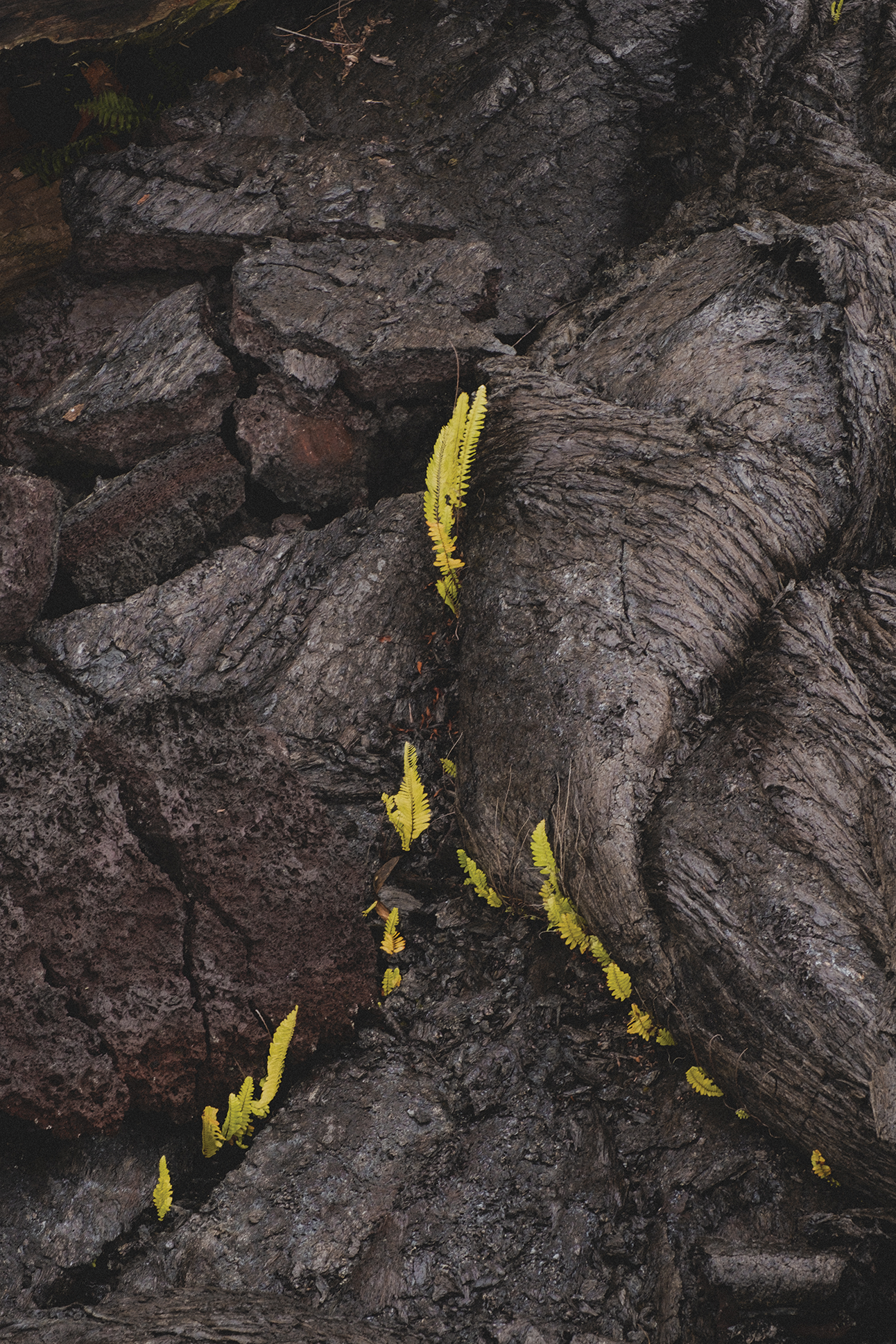
Highway 137 from Kalapana is now the only way to reach Pohoiki Bay, also known as Isaac Hale Beach Park. Before the 2018 eruption, Pohoiki Bay was a destination for local surfers and the rare place in Puna where the ocean could be accessed by boat. When I arrived, I found a parking lot backed by towering black lava, which stopped right before the bay. The bay itself, initially spared, has since filled with volcanic bits, and now the boat ramp leads down into a thermal pool separated from the ocean by a fresh expanse of black sand beach. The waves were also changed by the volcanic influx, erasing the breaks from the surface of the sea.
As I stood on the beach, I watched a father walk over the sand and rocks with two teenage children. They were buffeted by a warm wind as he pointed out where he had surfed, before things changed.
“I don’t know what dad’s tripping about,” I overheard his son say. “I see a wave.”
“Where?” the daughter asked.
“Where the waves used to be,” the son said.
My daily life looked very different before the birth of my child. One day, I imagine, my before and after will merge, her arrival instead marking a shift in my terrain. Yet what adults think of as “after” is the only time our keiki (children) know; they breathe life into transformed spaces as we recall the topography of the past.
You May Also Like: The Rugged Wonders of O‘ahu’s Kaiwi Coast
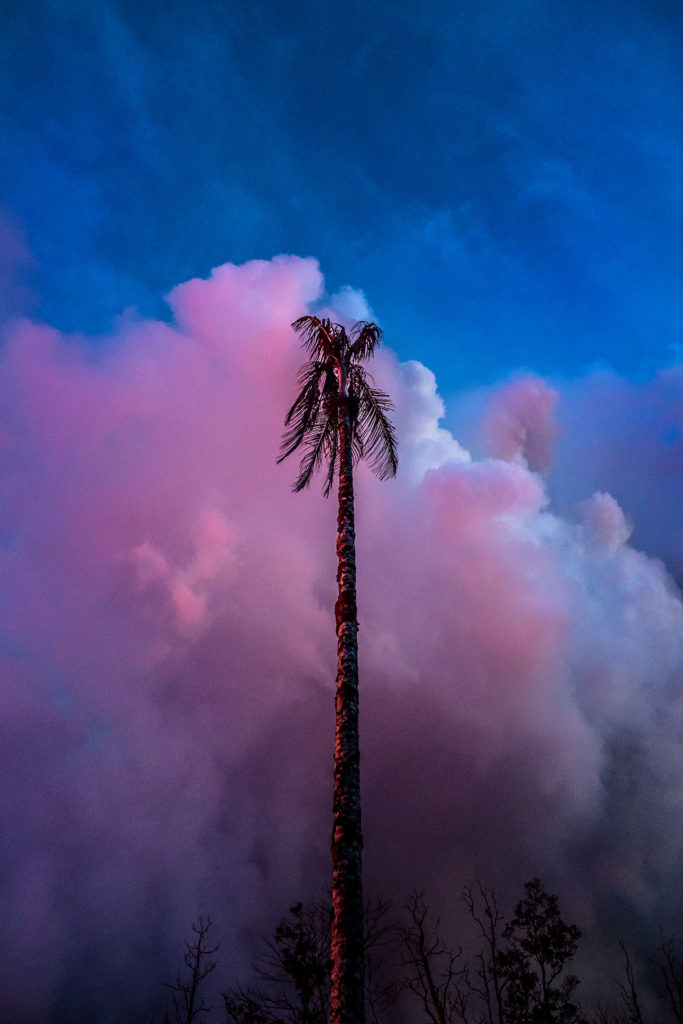
As mo‘olelo (legend) and the landscape reveal, the 2018 eruption was far from the region’s first. Along Highway 137, black-topped cliffs hold tide pools where families set up tents and children play in the water. Looking at a satellite image of Hawai‘i Island from above, you will find the easternmost tip shaded gray from the 1960 eruption behind Kapoho town and a faded dark swath like a birthmark running north of Leilani Estates, where lava flowed in 1840 and streams up to two miles wide entered the sea.
For Amy Ka‘awaloa, who was born and raised in Kalapana and evacuated twice before losing her home at age 16 to the 1990 eruption, there are days when she looks at old pictures and is overwhelmed with grief. “There is still new meaning that can be created from this new place that Pele has created,” she says in a video interview posted on the Hawai‘i County Facebook page Kīlauea Eruption Recovery. “But the feeling and emotions will still be there.”
Birth cannot be separated from loss. My child’s middle name is the first name of my grandmother, who passed away a year before my daughter was born. My uncle died months after my daughter’s birth, surrounded by his own children and siblings. As we raise children, one life gives way to another, and elders become ancestors.
In mo‘olelo, Puna is said to be the land where the sun rises, where the day begins. It is fragrant with hala and rich with ‘ōhia. It is fertile farm land. It is warm green and resilient blue and deep black. Here, Pele’s ways have birthed new land on Hawai‘i Island and buried the hard work and homes of its residents, who are intimately aware of her inclination to flow freely. In birth, I too was consumed by nature’s power of creation. Now, my daughter and I flow through the world together, looking to see what she will make of it all.

